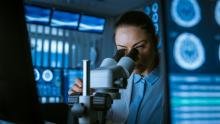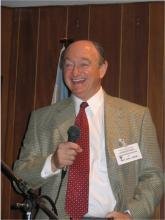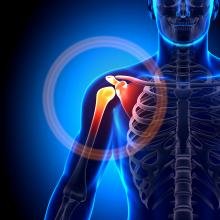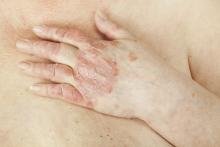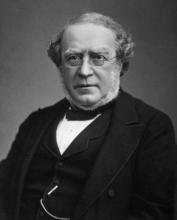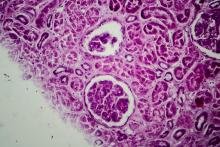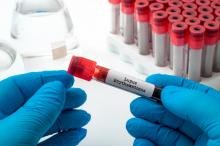The first time I saw him, he was casually leaning against the auditorium wall. Under his arm, held securely by the armpit, a folded magazine.
The year 1985. My first event in the specialty, Jornada Cone Sul of Rheumatology, in Curitiba, in which, I can say, this feeling was born, very close to the fascination for the Brazilian Society of Rheumatology, our SBR. A guild where everyone knew each other, a family spirit that would be confirmed throughout that time, of fraternal relationships and perennial friendships, without failing however, as in any group of brothers and cousins, between hugs and expressions of affection, others human feelings, disputes, jealousy, strife. On that particular occasion, there was the election, between two great professors, Adil Muhib Samara and Wiliam Habib Chahade, who would organize the Congress of the International League Against Rheumatology (ILAR) in Brazil, to be held in Rio de Janeiro, in the then still distant 1989. A sublime effervescence stirred the event, inciting an atmosphere of somewhat youthful dispute, mobilizing the fans as in a game of rival teams at the end of the championship.
But that is another story. I want to go back to that guy leaning against the wall that November morning. On stage, another of our great masters spoke of one of the many pathologies of our specialty, so rich in signs, symptoms, typical deformities, and disastrous consequences, and which at the time seemed destined for an inexorability, as acrid as it was apparently natural. The consolation of our apprentices was the certainty that we would live from a permanent investigative practice, an immense game of puzzles forming colorful and always inaugural mosaics. At the same time, the conviction that medicating is also care, acceptance and, when nothing else remains, empathy, solidarity in infusions of hope.
As the session draws to a close, the tall guy leans back, his right hand drawing his saber, that is, the magazine hitherto held in his left armpit and, with determined steps that resemble a swordsman cat, approaches the stage. Ask for the floor. With a loud bang, he announces the latest scientific information, a study published recently elsewhere and which completely contradicted what a now defeated Goliath had just professed from that pulpit.
That's how I met Morton Aaron Scheinberg. In successive encounters, the pattern became softer. That once menacing and provocative figure turned out to be an everlasting lighter, no longer with explosive fuses but with instigating sparks of light.
There were many exchanges of messages and phone calls. Friend Jorge Renato Dib, also a rheumatologist from Porto Alegre, says that he sometimes called in the middle of the afternoon between appointments just to tell a funny story, a joke or a comment about our unique national policy. For me, for the most part, whatever the subject, the prose ended in a Yiddish proverb. I confess that I always kept ready and if he was at home, he would even call his wife and make me repeat what he had said: - Cecilia, Neubarth knows Yiddish! He immediately got in touch with Professor Isidio Calich, another great friend, and the conversation was already developing like that of the neighbors of a small town, a "shtetl". As Isidio was also born in Rio Grande do Sul, he challenged him, he wanted me to discover with acquaintances in the south the name of the rabbi who had certainly circumcised me. - It can't be, Neubarth can't be a goy!
Today I would tell you, remembering these stories, that over time even the bear learns to dance. In Yiddish, of course: "Mit der tseyt, afilu der ber lernz tsu tantsn" and as always it caused him that soft and somewhat melancholic laugh of someone who goes back to childhood and knows the value of laughing at oneself. "Lomir fun ales lachn, veln mir besser machn", it is better to have fun than to suffer.
The goodbye of Morton Aaron Scheinberg (12.11.1944 - 27.09.2021) left us all surprised and saddened. Reference in the field of rheumatology not only in Brazil, but internationally. He graduated in Medicine from the Faculty of Medical Sciences of Santa Casa de São Paulo, with a Doctorate in Medicine from Boston University and a chair in Immunology from the University of São Paulo. In 2012 he received the title of Master by the American College of Rheumatology - ACR. A specialist in rheumatology and clinical immunology, he worked mainly in the areas of autoimmunity, therapy and diagnosis, in hospitals such as Albert Einstein, Abreu Sodré and Beneficiência Portuguesa, in private practice, participating in clinical research and holding symposia and conferences.
In 2006, when I became president of the SBR, I wanted to bring him closer to corporate life and created a new position, a representation at the American College of Physicians (ACP), of which he was a member and which we would announce soon the possibility of an international program fellowship, financed by the entity, and whose first scholarship was the teacher Marta Maria das Chagas Medeiros, a brilliant rheumatologist from Fortaleza, Ceará.
In addition to so many predicates, Morton Scheinberg always maintained that same initial spirit of scientific curiosity and his interventions in any meeting left that competitive tone to become a permanent challenge for collaboration and the search for new knowledge. It can be said that the speakers no longer feared him, but were prepared to answer his questions, which many times served as a stimulus to new questions and an incitement to continue investigating from an innovative perspective. Incessant researcher and magnificent producer of articles, not without justified pride, he noted with admirable frequency the publication of articles in the best and most respected international scientific journals.
But if he had enthusiasm there, he became moving when, in any meeting, trip or opportunity, always with Cecilia, he spoke of her children and grandchildren. On the importance of the papers record I would say to him, as if he were talking about the Law: "Az ess shteit nisht, zogt men nisht" - what is not written does not count. In relation to the family we would also agree: "Imetim iz gut, ober in shtib iz besser" - everywhere is good, but at home it is better!
Remembering all this and his characteristic smile, a kind of ironic way of twisting his mouth, it is impossible not to remember another of his passions, basketball, which he practiced and the Boston Celtics, his favorite team, whose logo decorated his identity on WhatsApp. That elf, a leprechaun leaning on a cane, smiling and winking his left eye mischievously, hat, bow tie and vest decorated with green clovers, symbols of luck. I have no doubt that, once we pass this pandemic and the meetings become in person again, we will find it every time a rogue and lively spirit challenges its curiosity and raises questions, breaking the false certainties of a constantly changing science. In this way learning happens and those who know a little about basketball and the Boston Celtics know that the main fundamentals of this sport are: passing, dribbling, shooting, free throws and rebounds. This is how I've watched Morton play since the first day I met him. I also heard that goblins are always beyond the rainbow, where pots of gold are also found.
It's life: "Der mentsh tracht, und Got lacht". The man plans and God laughs.








































